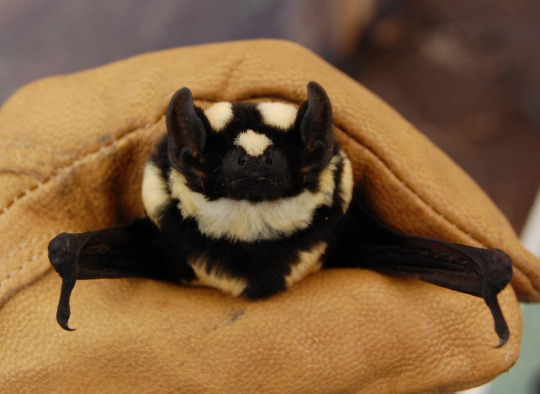any pronouns. people are the gender they say they are. blog topics include media interests (currently mostly revolutionary girl utena and various sci-fi/fantasy books), biology, philosophy, things that look cool.
Last active 2 hours ago
Don't wanna be here? Send us removal request.
Text
ok I do think I have to apologize to women in general. went “out” out in not my liberal-arts bubble for the first time ever in a group of women and did indeed get catcalled and then followed all the way home. dunno what that guy’s plan was but tbh I get why women are scared all the time. um. yeah.
#kept trying to make small talk because I’m drunk and being stopped by my friends#which was at first annoying but like. at some point I realized maybe I should listen to those#with more experience
1 note
·
View note
Text


when me and my boyfriend make meals we have a tradition of sending each other unappetising off-centre photographs of them in poor lighting. we call this "wikipedia food".
6K notes
·
View notes
Text
For the purposes of this poll, "model nuclear household" means one family living together that consists of a mother, a father, and their biological child(ren), and no one else. No half siblings, adopted or foster kids, no other adults living in the same home. The biological parents are the only adults who directly parent the children, and the parents are together, and both alive and present (not in jail, etc).
We ask your questions anonymously so you don’t have to! Submissions are open on the 1st and 15th of the month.
#did not expect these results. no divorce even???? your entire childhood with two non-divorced parents who grew up with non-divorced parents?#crazy
4K notes
·
View notes
Text
New species alert!

Teaming up for survival 🕷️🤝🦠
Deep-sea animals have evolved remarkable strategies for surviving in one of the toughest environments on Earth. MBARI Adjunct Shana Goffredi leads the SymbiOxy Lab at Occidental College and studies the symbiotic relationships between invertebrates and bacteria. This week, Goffredi and her team shared an exciting discovery: tiny sea spiders who farm crops of bacteria.
Microbes power unique communities of life on the deep seafloor. The edge of the Eastern Pacific Ocean hosts many methane seeps, where hydrocarbons bubble up from the seafloor and fuel a complex food web anchored by methane-eating bacteria.

Goffredi and her team have been studying seeps from Alaska to California, and in 2021, she led an expedition aboard MBARI’s retired flagship research vessel, Western Flyer, to study the Del Mar Seep offshore of Southern California. This expedition and additional fieldwork with the submersible Alvin in Southern California and the Aleutian Islands revealed three new species of sea spiders in the genus Sericosura who appear to live exclusively at methane seeps.
These spiders host methane-oxidizing bacteria on their exoskeleton, which they cultivate and consume. This novel partnership represents a previously unknown interaction between animals and chemically fueled microbes, expanding our understanding of microbial symbiosis in the deep sea.

This research underscores the complex web of life that thrives in the ocean’s depths. Who knows what we’ll discover next?
Learn more about these spectacular spiders.
📸 Bianca Dal Bó, Occidental College
140 notes
·
View notes
Text
this is a post I decided not to make earlier but I will now because it occurred to me it actually intersects with the last one despite originating in a different place. I have a lot of instinctual distrust of groups of feminine cis women. instagram photos with matching wavy hair and dresses the same length. it is unfair. nonetheless it is true that sometimes a woman is holding herself to certain very specific standards and it does follow that she, putting me into the uncomfortable category she puts herself, is holding me to the same standards, and I am failing in her eyes. and when all of someone’s friends appear to be people who are (mostly, publicly, outwardly) reaching these standards, I think some wariness is justified. but there’s a distinction between conforming for whatever reason—coincidence, ease, power, subversion, habit—and pushing that conformity onto others, and ignoring that distinction is, indeed, unfair.
1 note
·
View note
Text
sorry to comment on sabrina carpenter album cover discourse but my take is that it is all making me feel bad. mixing badly with other things in my life that seem not closely related, I think. regardless of opinion it’s everyone going hey did you know that since the world out there sees you as part of this overspecified category of woman many people especially men who want to have sex with you will put you into a specific sexual category regardless of what you want or how you like to express yourself sexually? and your desires are either completely irrelevant or assumed to be already known completely by the fact that you’ve been put into this category even though you’re still figuring all this shit out? and like yes I did know that but I don’t want to think about it right now.
1 note
·
View note
Text
getting the urge to download a stupid free mobile phone game that I’ll get tired of in two months max. anyone have suggestions or are you all too cool for that. they do not have to be “good.”
0 notes
Text
forgot stellan skarsgård was in mamma mia…whiplash after finishing andor yesterday
3 notes
·
View notes
Text
on some level it makes sense that when i ask an LLM for a book rec on a given topic it will just make one up, like, "which books exist" is a totally arbitrary fact, its crazy that somehow predicting the most likely token correctly identifies books that actually exist much of the time. but it's such a bizarre experience. the idea of someone giving you the title, author, and publishing year of a book, with some specific details about it too, and the book being totally fictional, is kind of freaky. like. if someone did that to you in real life, that guy would be real weirdo
1K notes
·
View notes
Text
regressing in the breakup emotions I think. feeling very sad. perhaps this is a function of losing the delusion that the relationship is not actually permanently over? but I’m not sure that is happening either.
#breaking up at the so far best point in your relationship because you’re going to different places but still feel strongly about each other#and at some level definitely both want the relationship to continue#will really fuck with your head
2 notes
·
View notes
Text
it makes me so furious when i want to know about a specific ass species of animal and theres only like 6 existing photos of it. like im actually going to pass away if humanity as a whole doesnt release more pied butterfly bat images




7K notes
·
View notes







